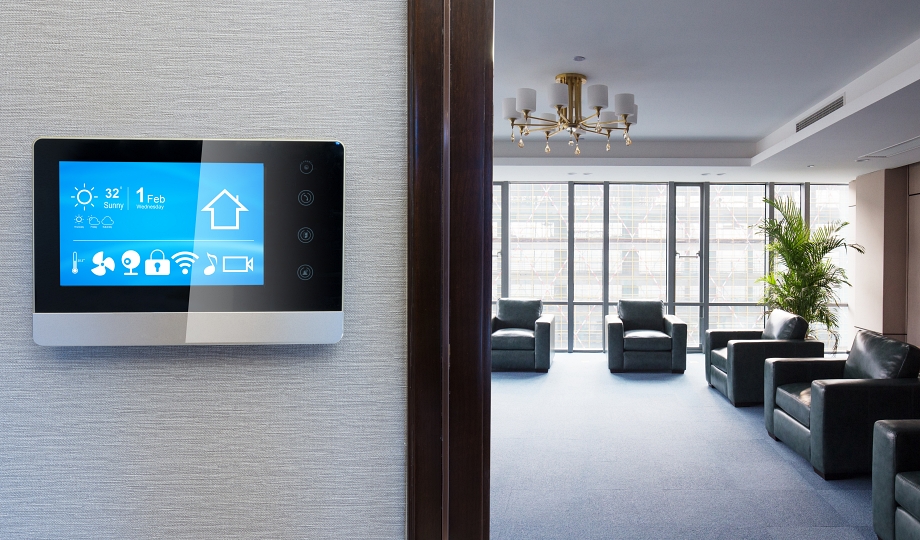
Smart thermostats and connected HVAC systems are revolutionizing the industry by enhancing energy efficiency, improving comfort, and enabling data-driven tech insights. These systems leverage IoT, AI, and big data to optimize performance, personalize settings, and facilitate remote control and monitoring. This results in reduced energy consumption, lower operating costs, and proactive maintenance, ultimately benefiting homeowners and HVAC pros. Contact ITI Technical College for more information.
HVAC Thermostats And Systems: Enhanced Energy Efficiency And Cost Savings
Smart thermostats and connected systems are reshaping the HVAC industry in many ways. Precise temperature control enhances energy efficiency and cost savings. Smart thermostats allow users to customize temperature settings based on their preferences and schedules. This device minimizes energy waste when the house is unoccupied or during off-peak hours.
 Some smart thermostats learn from user behavior and adjust settings accordingly, optimizing comfort and efficiency with adaptive learning. Smart systems provide instant, real-time monitoring and feedback on system performance. Users can make informed adjustments and identify potential inefficiencies. Data-driven optimization is achieved by collecting data to identify and analyze areas for improvement, leading to further energy savings.
Some smart thermostats learn from user behavior and adjust settings accordingly, optimizing comfort and efficiency with adaptive learning. Smart systems provide instant, real-time monitoring and feedback on system performance. Users can make informed adjustments and identify potential inefficiencies. Data-driven optimization is achieved by collecting data to identify and analyze areas for improvement, leading to further energy savings.
If you need a new HVAC system but can’t afford one, consider installing a smart thermostat. Its modest cost will upgrade your system and help make your home more comfortable while reducing energy bills.
The Joy Of Improved Comfort And Convenience
Today’s HVAC systems provide more even comfort and convenience throughout a house in every room when they are installed correctly. They have these advantages over older systems:
- Remote Control and Scheduling: Users can remotely manage their HVAC systems via mobile apps or web platforms, offering flexibility and control over their indoor environment.
- Personalized Settings: Smart systems can learn individual preferences and adjust settings accordingly, ensuring optimal comfort for each occupant. You can set the thermostat to a different temperature setting when you go to work and just before you return home. You will save money while away, and the house will cool or heat to your preferred temperature just before you return.
- Integration with Other Smart Home Devices: Smart thermostats can be integrated with other smart home devices, such as smart lighting and security systems. Their integration creates a seamless and connected home experience.
|
“Smart thermostats and connected HVAC systems are revolutionizing the industry by enhancing energy efficiency, improving comfort, and enabling data-driven tech insights.” |
Proactive Maintenance And Extended Equipment Life
Tech-enabled HVAC systems can predict when maintenance is needed based on data from sensors and historical patterns. This technology allows for timely repairs and prevents costly breakdowns. By anticipating maintenance needs, smart systems can help reduce downtime and ensure uninterrupted comfort.
Proactive maintenance can extend the lifespan of HVAC equipment and ensure it operates at optimal efficiency. When air filters are dirty or clogged, heating and cooling a house puts undue strain on the system. Overlooked repairs can also diminish the efficiency of the equipment and reduce its lifespan.
Having an annual checkup of the air conditioner and furnace, or heat pump is a wise way to keep on top of your HVAC system’s performance. You can schedule the yearly home inspection or purchase an annual maintenance contract at a reduced cost.
Data-Driven Insights And Informed Decisions
Tech-enabled HVAC smart thermostats and connected systems provide data-driven insights and more informed decisions about operational performance in these ways:
 Real-Time Data Collection: Smart systems collect data on temperature, humidity, occupancy, and other factors to provide valuable insights into the system’s performance. You can set alerts to show on your mobile devices while you are away from home in case of a system breakdown or emergency.
Real-Time Data Collection: Smart systems collect data on temperature, humidity, occupancy, and other factors to provide valuable insights into the system’s performance. You can set alerts to show on your mobile devices while you are away from home in case of a system breakdown or emergency.- Performance Analysis: Collected data can be used to analyze system performance, identify inefficiencies, and optimize energy usage.
- Informed Decision-Making: HVAC professionals and homeowners can use the data to make informed decisions about maintenance, upgrades, and system optimization. If you get an alarm notice while away from home, you will know to check out the problem and call your HVAC technician.
HVAC Thermostats And Systems: Increased Sustainability
Improved HVAC thermostats and systems can increase sustainability by reducing energy consumption. By optimizing energy efficiency, smart HVAC systems contribute to lower energy bills and a smaller carbon footprint. The use of smart technology in HVAC systems aligns with broader sustainability goals, promoting responsible energy management.
Advanced tech-enabled HVAC systems contribute to improved indoor air quality and overall health, further supporting sustainable living. If you are interested in an HVAC certification, explore what ITI Technical College has to offer. Our Air Conditioning, Refrigeration, & Electrical Technology (AOS) Associate in Occupational Studies Degree will prepare you for a fascinating entry-level position as an HVAC repair technician.
For more information about graduation rates, the median debt of students who completed the program, and other important information, please visit our website: https://iticollege.edu/disclosures/





